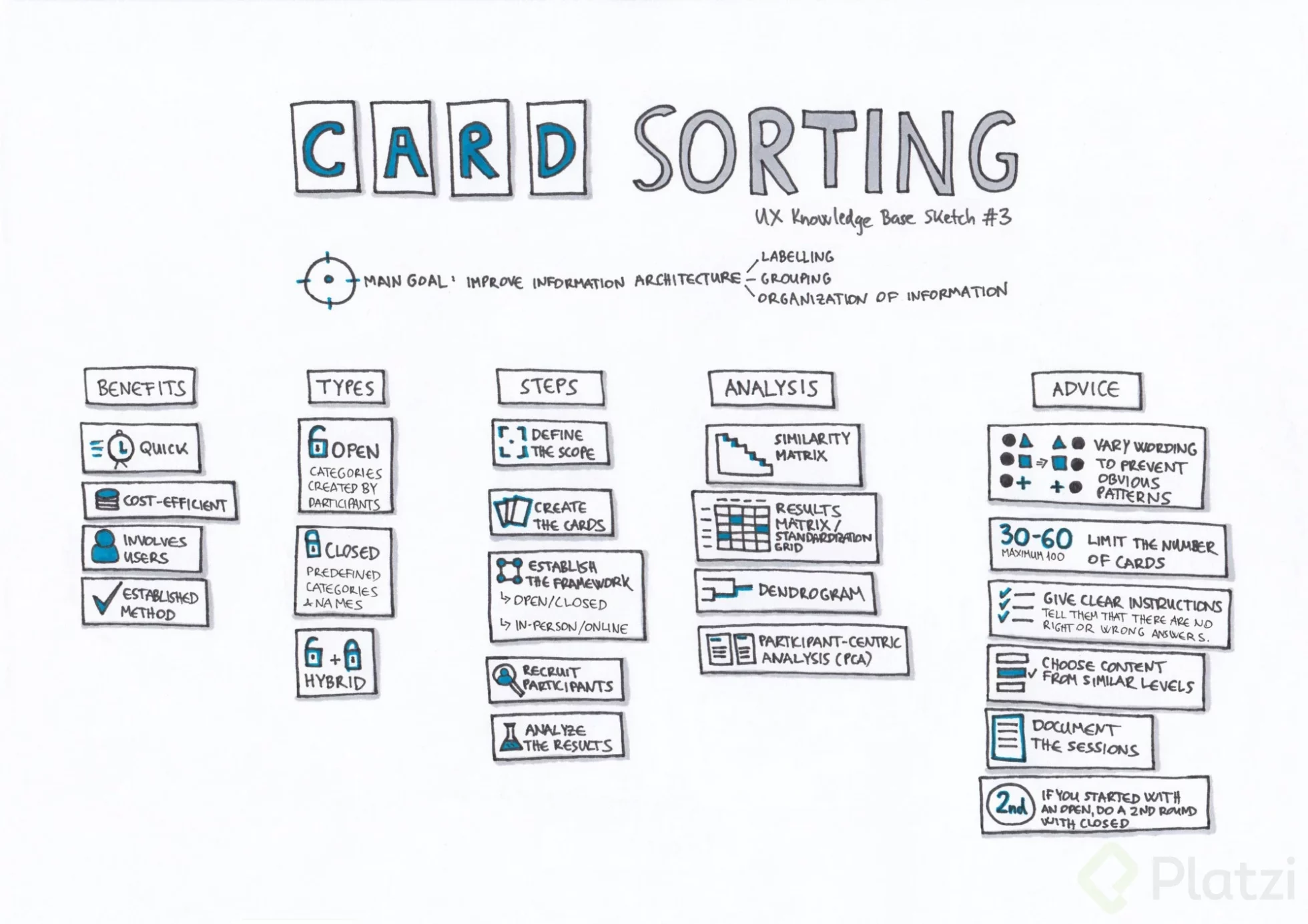Let’s be honest, UX research can sometimes feel like you’re navigating a labyrinth of contradictions and uncertainty, only you don’t have Ariadne and a big-ass ball of string to back you up. You tiptoe around every corner, hoping you’re not gonna bump into a grizzly beast that puts an end to all your hard work. But to exit the labyrinth, you have to actually make sense of the data you’ve collected.
One day, you think you’ve cracked the cosmic code to user behavior and that you may well have developed psychic powers along the way, and the next, you’re banging your head against the wall, wondering why on earth there are so many contradictions in your data. But fear not, my dear researchers, for understanding foundational research in UX can be the key to unlocking the secrets of user experience.
Brace yourself for a tsunami of methods, examples, and benefits of foundational research in UX. From user interviews to card sorting, we’ll cover it all. Let’s hope you’re a little more enthusiastic about user research than our Ian.
@tldv.io You just can’t win #product #productmanager #productmanagement #tech #uxdesign #corporate #startup
♬ original sound - tldv.io - AI Meeting Recorder
What is Foundational Research in UX?
First thing’s first, let’s define this behemoth clearly: foundational research is a type of exploratory research that focuses on problems or topics that haven’t yet been clearly defined. So before that sentence, you’d have needed to conduct foundational research just to figure out what it was. Sort of.
The point is this: foundational research is the backbone of UX. In a nutshell, this type of pathfinding research is all about understanding the fundamental principles behind why users behave the way they do when interacting with a product or service. And we can’t stress its importance enough.
This type of research provides us with the necessary groundwork to design products that meet the needs of our users. Without foundational research, we’re essentially shooting in the dark, hoping to hit the target blind. But with it, we’re switching the lights on and nailing the target every time. It gives us a clear understanding of our users’ behaviors, motivations, and pain points.
What more could you want?
What are Some Examples of Foundational Research?
Specific examples of foundational research can be found by checking out actual case studies, like this one by Key Lime Interactive.

For a more general example, imagine the following: a thorough investigation into the primary elements of brands and branding. Before you can create a solid brand, you first have to analyze your competitors and figure out what’s working for them.
Before you can create a killer product, you first need to know what your potential users want and need. You need to find out what drives them, what motivates them to act, what makes them stay up all night long with excitement. Without this knowledge, you cannot build the product of their dreams. This is why the research is considered foundational and exploratory. Without it, you’re basically lost.
Why is Foundational Research Important for UX?
Foundational research is important for UX for several reasons:
- It provides a deeper understanding of users: Foundational UX research helps designers tunnel deep into the minds of their users, digging up their needs, behaviors, and attitudes. This understanding can then be used to create products and services that are more relevant, useful, and engaging for users.
- Foundational research informs design decisions: If foundational research indicates that users struggle with a particular task, designers can focus on improving the usability of that task to enhance the user experience.
- It reduces the risk of design failures: By conducting foundational research early in the design process, designers can identify potential issues and make necessary adjustments before launching a product or service. Staying informed about 2025 design trends can also provide valuable insights that help avoid design failures, which can cost a fortune, not to mention tear a big ol’ hole in a brand’s reputation.
To put it simply, foundational research is the beating heart of user experience, especially in the early days. Leave it out and you’d best believe the heart stops beating and everything else falls apart.
When to Use Foundational Research?

Our friends over at Gitlab have a great infographic to see when you can make use of foundational research. It’s basically the earliest stage of research, where you’re discovering and exploring a topic to learn more and prepare with more depth.
If you’re wondering when you should use foundational research for your business, check below for some general advice.
- When there is hardly any information about a topic
- To develop a deeper understanding of your users
- To assist with product direction, especially before the roadmap is complete
- When you are aware of weaknesses in your product
- To stay ahead of the competition
- To unveil hitherto unknown user problems
- To ensure you’re making the right steps when it comes to product localization as a means to bring your product to the global scene
Foundational UX Research Methods
When conducting foundational research, you’ll use a variety of methods, from card sorting to surveys, to understand your users on a deep and meaningful level. By doing so, you’ll gain the knowledge to create products that look great, feel amazing, and satisfy your users all day and all night. And yes, we’re still talking about your product or service here.
Foundational research is not just a one-night-stand either. It’s an ongoing process of refinement and iteration – a relationship, if you will, where the end result is increased pleasure for your users. As you learn more about them, you adjust your approach and continue to build upon the foundation you’ve established.
You can check other amazing user research methods in our ultimate guide for when to do user research.
For now though, here are some of the foundational research methods that you can employ to squeeze every last drop of potential out of your product or service.
User Interviews
User interviews are a key component of foundational UX research. By speaking directly with users, researchers will find it easier than ever to gather insights into their needs, pain points, and behaviors. These insights can then be used to inform the design of products and services that better meet users’ needs.
Foundational Research Tools for User Interviews
tl;dv
Need to conduct a bunch of user interviews but don’t know where to start past Zoom or Google Meet? Well, how about a free Chrome extension that records (audio and video), transcribes, translates, and automatically generates notes and summaries while you focus on the meeting?
Utilizing the full force of GPT-4 technology, tl;dv is a remote UX research tool that is designed specifically for user researchers. Gone are the days where you have to make copious notes, sifting through them afterwards to try and rekindle the emotions of the user. With tl;dv, you have the recording from start to finish. You can create timestamps mid-call so that you can jump back to the juiciest insights in a flash. You can also tag your colleagues to share insights directly to their email instantly. Otherwise, due to their vast array of integrations, you can share clips, reels, highlights or timestamps in a simple click.
Why rewatch entire user interviews when you can skip to the good bits? And just like that, your tl;dv library will become your new UX research repository. Intrigued? Give it a whirl. With the best free plan in the business, you’ve got nothing to lose. And I guarantee you won’t be disappointed.
Usability Testing
Usability testing, to put it simply, involves observing users as they interact with a product or service and measuring their ability to complete tasks and achieve their goals. This type of research helps designers identify areas of a product that are difficult or confusing for users, allowing them to make improvements that enhance the user experience.
Foundational Research Tools for Usability Testing
Hotjar
Hotjar is a fantastic heat mapping tool that lets you track where your users click on your website or app. Coming with a big suite of features that allow you to watch your user from an entirely new perspective, Hotjar is not one to be missed if you want to see exactly what your users are doing while they’re on your app or site (and what they’re not doing).
Maze
Maze is a prototype testing tool that allows you to quickly and easily hire participants to take part in your foundational research. You can create prototypes to test your ideas in minutes and have hard data quicker than you could imagine.
Card Sorting

Card sorting is a UX research method that helps designers understand how users organize and prioritize information. Participants are asked to group items into categories based on their understanding of the content. This information can then be used to inform the information architecture and navigation of a website or application. It’s perfect for the early stages of building an app or website.
Foundational Research Tools for Card Sorting
Optimal Workshop
Trusted by Uber, IBM, Yelp, and dozens of other top brands, Optimal Workshop is a great online way of card sorting. It allows for remote participation so that your users can sort cards into categories and provide feedback on their thought processes in real-time.
Diary Studies
Diary studies involve asking participants to keep a journal or diary of their experiences with a product or service over a set period of time. This type of research can provide valuable insights into how users engage with a product or service over time, as well as the factors that may influence their attitudes and behaviors.
Foundational Research Tools for Diary Studies
A Diary
Fairly self-explanatory, if you want to go for the most simple option for diary studies, a diary is all you really need. Oh, and a pen!
dscout
dscout is a digital platform in which you can conduct diary studies so that the results are easily accessible by the researchers. This is particularly important if you work remotely or asynchronously. It includes features such as prompts, reminders, and multimedia uploads
Surveys
Surveys are a common method used in foundational research to gather quantitative data about users’ behaviors, attitudes, opinions, and preferences. By gathering data from a large sample of users, researchers can start to notice trends and patterns that can prove helpful when creating user satisfaction. Surveys are also great for identifying user demographics, evaluating user experience, and testing product concepts,
Foundational Research Tools for Surveys
SurveyMonkey
SurveyMonkey is a popular online survey tool that allows users to create and administer surveys, analyze results, and share insights. Use it to spin up some super surveys that people will actually participate in.
TypeForm
Typeform is a tool for creating engaging and interactive surveys. It includes features such as visual and audio elements to make surveys more interesting to participants, thus generating more responses.
Persona Development
Developing user personas is another important part of foundational UX research. Personas are fictional representations of user archetypes, based on research and data. They help designers understand the needs, motivations, and behaviors of different user groups, which in turn helps them design products and services that are more relevant and useful to those users.
You can build these personas by hosting focus groups or conducting user interviews.
FAQs About Foundational Research in UX
How is Foundational Research Different from Directional Research?
While foundational research and directional research are both used in UX and product design, they differ in scope, methods, and goals. The main difference between the two is that foundational research is generally conducted at the very beginning of the product development cycle when you’re still learning about your users’ wants and needs, as well as your competition, whereas directional research takes place further down the line. Directional research is conducted to test specific hypotheses and validate design decisions.
There is certainly a level of crossover as directional research typically involves quantitative research methods, such as surveys and usability testing, that allow researchers to gather data on a larger scale and make statistically significant conclusions. These methods can also be used in foundational research, but for a very different purpose: clarifying goals and problems.
Is Foundational Research a Form of Generative Research?
Yes. Generative research seeks to deeply understand users which is the essence of foundational research, however, generative research can happen at any stage of a product’s lifecycle, whereas foundational research is conducted at the very earliest stage, where a problem or need is still being defined, and a user group is still being identified.
Is Foundational Research Qualitative or Quantitative?

Foundational research can make use of both, but qualitative research will be essential to figuring out problems and needs in the market. The point is to get an in-depth understanding of a situation, or of users’ behaviors and attitudes.
That’s why foundational research relies so heavily on research methods like user interviews and focus groups. The qualitative nature of the results is indispensable. For foundational research, an epic online meeting recorder is essential.
How to Use, Analyze, and Document Foundational Research?
Use foundational research to flesh out your purpose. What’s your target market? Who are they, what’s the demographic, what are they already using? Foundational research, or exploratory research, is a way of honing in and narrowing your scope.
Once you’ve conducted the research and have collected the data, you can analyze it, looking out for patterns that will point you in the right direction. You can organize your data by color coding it to help you identify key themes and recurring insights. If you’ve conducted a lot of user interviews, you might want to check out our guide on analyzing user interviews to get the most out of them.
Use the insights garnered from your foundational research to create personas and user journeys. Make sure you present your findings in a way that your stakeholders can easily understand. Nobody wants to sit through hours of you lecturing them why they should do X, Y, and Z. Instead, show them with the voice of the customer! You can also choose a research repository to store all your research in one place and save you hassle in the long run. Trust us with this one! Your future you will thank you for it.
Wrap Up
All in all, foundational research is a quintessential type of research in the early stages of a project. It encompasses well-known research methods like user interviews, focus groups, and card sorting, but the purpose is about understanding the user on a deeper level and clarifying some kind of topic or problem in the discovery stages of a new project.
Best of luck with your foundational research, and don’t forget to bookmark this page to come back and access the resources in the future!





